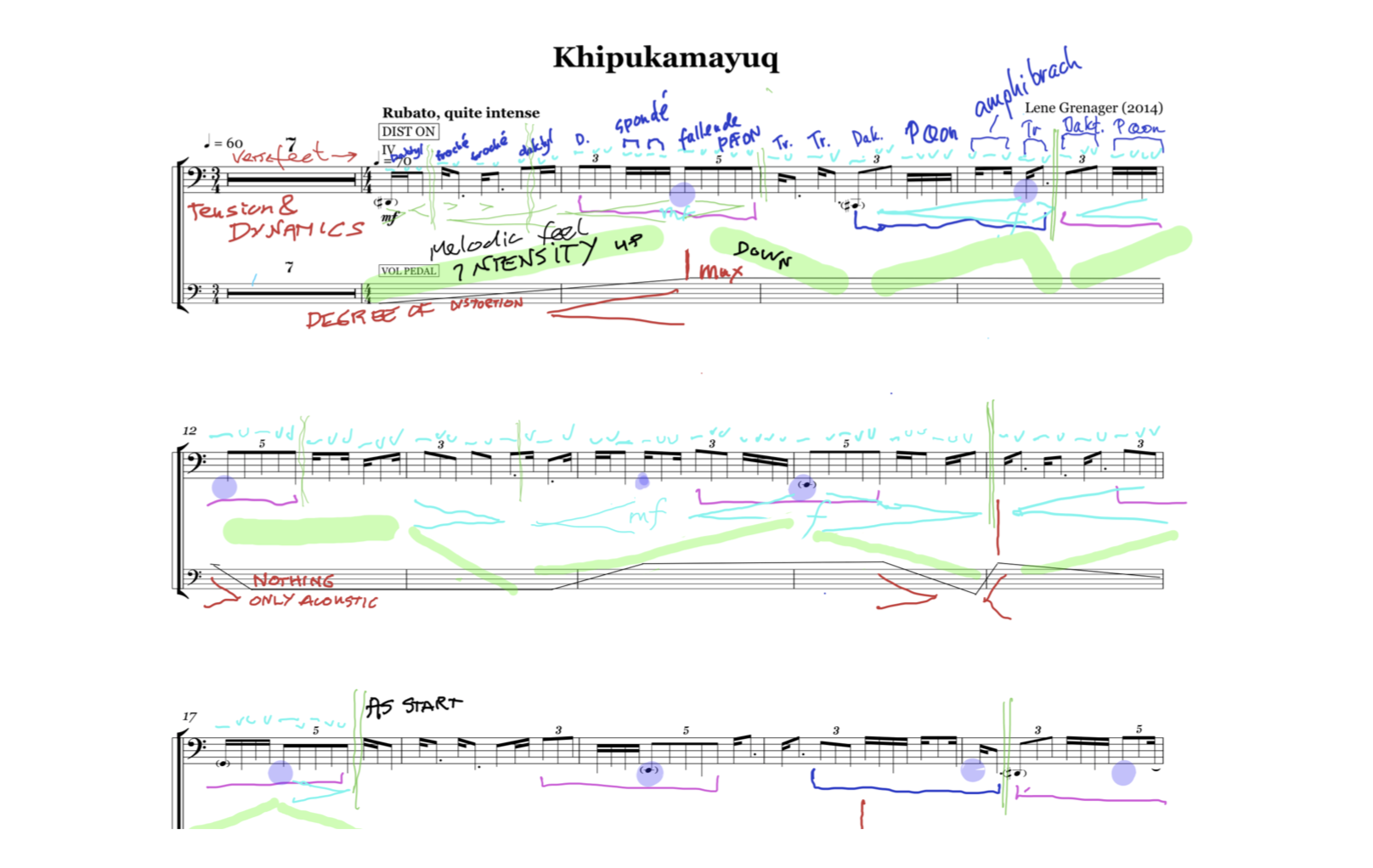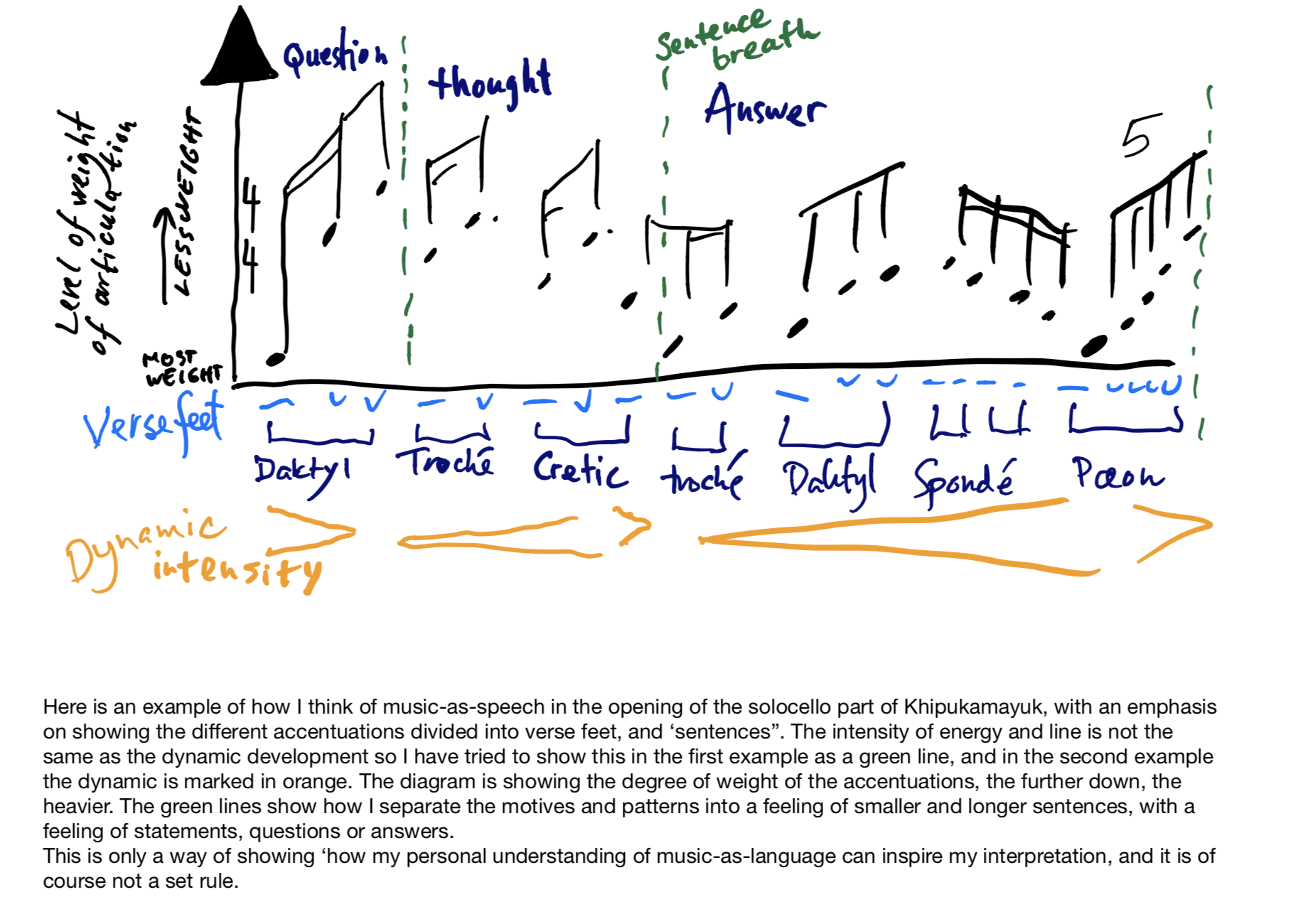Practice blog on interpretation of Khipukamayuk
Today I will focus on the interpretation – and analyse the form of the work. Trying to see figures and rhetoric principles to help me create the interpretation. At the same time, I want to keep the feeling of presence through the whole practice session. And I also try to make an affect analysis of the music to be more aware.
At the start, there is a rhythmic line with haphazard notes, or the notes are not fixed – they are created as a feeling of movement and higher/ lower.
In the video below I explain how I use the thought of music-as-speech and verse feet in working on the articulation:
I check the orchestra score to see if that makes a difference for my interpretation. Then when I play I feel the swing of the rhythm, and I think the lines melodically, make sure the arms do not disturb.
Energy is important. I sing the lines with the articulation. Do not stress the timing. There is a freedom in improvising, but like this I have a main idea about the interpretational directions and how I want to use the patterns. The expression here is eager, and a bit disturbed.
The second part, from bar 34, (see figure 22) is with both distortion and octave pedal. This part has many different expressions in short motives, there is the percussive part from the former part, then there are the col legno lines which are mysterious and dark. And melodic up going lines as proud statements – after a while they also go downwards. Feel them cantabile, singing, in the body. I sing the different possible articulations, then try them on the instrument to see if they make sense. I could play as if I talk the lines. And I imagine that there are here three different conversations going on at the same time, probably not talking about the same thing. You have the proud fanfare like lines, happy and triumphant. Then more thoughtful percussive part, and the col legno is suppressed energy, somehow scary. It is a challenge to swap between the different techniques – percussive left hand slapping with bow relaxed on the string, contact with the bow and singing lines, and then the col legno with the bow turned. I try to not get stressed and muddled up, and focus on the different expressions more than how to solve this technically.



